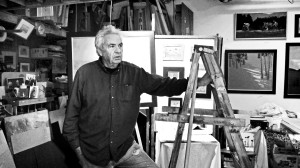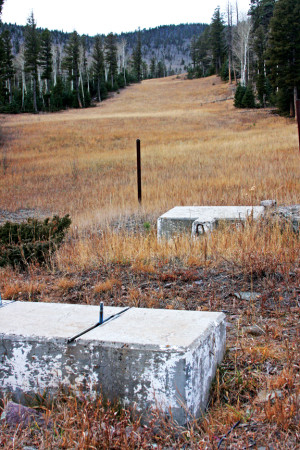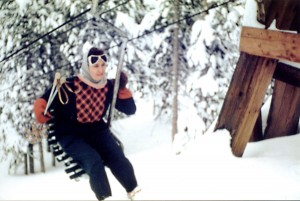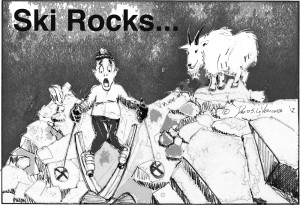Besides the ski areas mentioned in the previous articles, there are quite a few ghost ski areas around Colorado, including the area at the Broadmoor Hotel in Colorado Springs which operated from 1959-91. Here is a list of others in our region whose glory days are long past.
COMO – Indian Mountain Ski Area. The area served residents of Fairplay and Colorado Springs and operated sporadically from 1972-88. The area was built by a property development company out of Denver which had hoped to develop housing in conjunction with the area. It had a vertical drop of 573 feet and included a ski school, one lift, two surface tows, a cafeteria, a lodge and a rental shop. Located south and east of the town of Como, it ultimately closed due to lack of snow.
LEADVILLE – Camp Hale B-Slope. The B-Slope was designed to train soldiers of the Army’s 10th Mountain Division at Camp Hale during World War II. Camp Hale was constructed in Eagle Park, east of Highway 24 between Leadville and Red Cliff, Colorado. The B-Slope was reportedly used to train novice skiers who, after learning to carve turns there, were bused up to Cooper Hill (now Ski Cooper) to be trained further.
Climax Ski Area. The area was built for the employees of the Climax Molybdenum Mine and operated from 1936 through the 1950s. It was the first ski area in Colorado to offer night skiing. It also had a rope tow and t-bar as well as a ski jump.
Dutch Henry Hill. Operated by the Cloud City Ski Club, the area featured a rope tow, night skiing, a warming hut and snowmaking. It is located just south of town near the entrance to Colorado Mountain College and is currently used as a tubing hill.
FAIRPLAY – The Hoosier Pass Ski Area. Located outside of Blue River off Highway 9, it operated from 1938-49. The area boasted a restaurant with a bar and a dance floor, as well as a cabin which served as a warming hut. Its two trails were accessed by an 800-foot-long rope tow. After the rope tow broke down in the late 1940s, the area was closed for good.
GUNNISON – Sagebrush Ski Tow. It operated from 1936-38 and was opened by the Gunnison Valley Ski Club on CR-17 near downtown with the help of the Works Project Administration. The rope tow was operated by a 6-cylinder Buick engine. The crumbling remains of the support structures for the rope tow can still be found. Conditions were not the best for skiing, so the Club moved its operations to the Pioneer Ski Area (see article on page 10).
SAN ISABEL – Ski San Isabel. Located near the Bigelow Divide outside of Wetmore on Highway 165, it operated from the 1960s through 1985 and had twin rope tows, a ski school, a snack bar and a rental shop. Of the runs, 60% were for beginners and 40% for intermediate skiers. In the mid-1980s a lift ticket could be had for $5.
WESTCLIFFE – Silver Hills Ski Area. In operation from 1966-84, the area had a J-bar and a rope tow. It was located a few miles past Querida, east of Westcliffe off Highway 96. Remains of the lodge, rental shop and rope tow still remain. It also included a tubing hill. The J-bar reportedly was first installed at Camp Hale, then Cuchara before finding a home here.
MARSHALL PASS – The narrow gauge railroad transported skiers from Gunnison and Salida to the ungroomed slopes of Marshall Pass in the 1930s. There were 700 feet of vertical drop on the west side of the pass. A section house at a place called Shavano was converted by the railroad into a warming hut for the skiers. When it became overcrowded, heated coach cars were brought in to help warm skiers. The Salida train left the city at 7 a.m. and returned at 10:05 p.m.
Prominent Colorado skiers T.J. Flynn, Thor Groswold and Phillipe de Pret all taught skiing at Marshall Pass.
The Denver and Rio Grande Railroad eventually stopped running trains over Marshall Pass when standard gauge tracks became the norm, and the ski train disappeared. Brave skiers today may consider accessing the slopes via snowmobile, or, for the truly adventurous, skin up your Nordic skis for a very, very long ascent.
Thanks to www.coloradoskihistory.com where much of this information was found.




